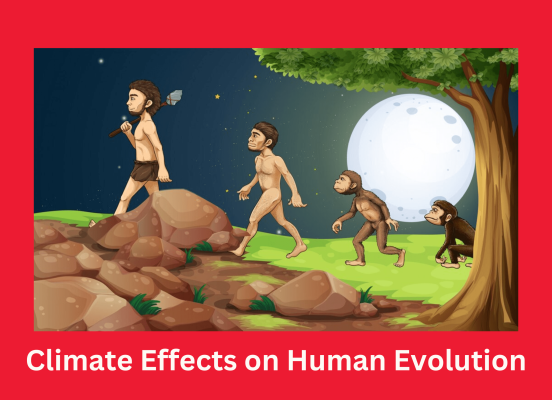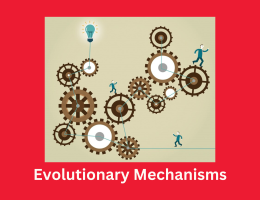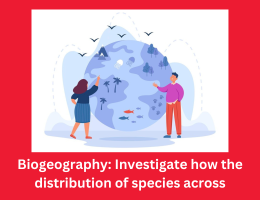
Climate Effects on Human Evolution
- By admin --
- Sunday, 07 Apr, 2024
Climate Fluctuation
Scientists that studies human evolution, referred to as paleoanthropologists, have positioned forth a number of theories at the feasible stimuli that shaped extensive advancements inside the beginnings of human beings. Over the route of human evolution, quite a few species have arisen, and numerous diversifications have accumulated over time. These include the capacity to make gear, the ability to stroll upright, brain expansion, extended maturation, the emergence of complex intellectual and social behavior, and the dependence on generation to exchange the environment.
The emergence of people has been observed by modifications in the environment, consisting of drying out, cooling down, and larger-scale climatic swings. How did adjustments within the surroundings have an effect on the formation of novel variations, the genesis and extinction of early hominin species, and the evolution of Homo sapiens as a species? Any bipedal creature this is carefully associated with human beings is referred to as a "hominin," meaning that it is on the human divide of the evolutionary tree, having cut up off from a commonplace ancestor between 6 and 8 million years ago.
Organisms and Environmental Change
Every creature stories some degree of environmental fluctuation. Certain changes, such each day or seasonal fluctuations in the amount of light, precipitation, and temperature, occur quick and may be cyclical. Over prolonged durations, hominins noticed full-size fluctuations in temperature and precipitation, leading to significant alterations within the plant life — moving from grasslands and shrublands to woods and forests, as well as from frigid to temperate regions. Tectonics, which incorporates earthquakes and uplift which include the elevation of the Tibetan Plateau, significantly changed the surroundings of hominins. This resulted in altered terrain and changing rainfall styles throughout a massive place of northern China. Lakes and rivers will have their locations and sizes altered with the aid of tectonic hobby. Forest fires and volcanic eruptions also modified the the accessibility of assets such as meals, water, and safe haven. The impacts of a lot of those modifications, in evaluation to seasonal or daily fluctuations, endured for many years and got here as a wonder to hominins and other creatures, growing the degree of instability and unpredictability of their survival conditions.
Numerous creatures have options for precise styles of environment, inclusive of desired temperature and precipitation degrees, or unique plant types (forests vs grasslands). An animal's preferred surroundings would possibly alternate, and in reaction, it could either relocate and observe its new place or undergo genetic model. Should they not, they go extinct. However, an extra choice is that a populace's capacity to adapt to novel and transferring environment will grow. One trait of humans is their capacity to conform to a wide range of diverse habitats and surroundings.
Adaptation to Change
Regarding the surroundings's impact in human evolution, there are numerous theories. The so-referred to as "savanna hypothesis" holds that a few adaptations, which include upright on foot or the capacity to make tools, had been related to the growth of grasslands and drier surroundings. This extensively everyday belief holds that a big wide variety of sizeable human variations originated within the African savanna or were impacted by using the environmental stress of a growing dry grassland.
We might anticipate that essential human variations which have developed in response to choice strain from a particular environment could be especially properly-desirable to that habitat. Fossils of hominins might be found in those settings rather than in a number of habitat kinds.
The Variability Selection Hypothesis
An opportunity principle holds that environmental instability, in place of any unique form of habitat (such as grassland) or environmental fashion (along with drying), precipitated the most important activities in human development. Variability choice is the time period for this idea, which turned into created through Dr. Rick Potts of the Human Origins Program. This principle highlights the range seen in all environmental facts in addition to the reality that the genus Homo was now not restrained to any one form of habitat. Rather than becoming experts in a specific kind of surroundings, human predecessors evolved a more capability to evolve to moving environments all through the records of human development. How did hominins accumulate the potential to adapt to converting environments and conditions?
Ancient Hominins Were Found in Diverse Habitats
Remains of extinct hominins were discovered in many various environments. While numerous hominins, inclusive of Ardipithecus ramidus and Orrorin tugenensis, had been determined in forested environments, Sahelanthropus tchadensis has been determined in near proximity to a number of plant kinds. Ardipithecus ramidus became once found in both forested regions (the Aramis website online) and forest grasslands where grazing animals have been the predominant species, according to reconstructions of the species' ancient habitat at two separate Ethiopian sites (the Gona website). In Kanapoi and Allia Bay, Kenya, Australopithecus anamensis has been determined beside some other form of mosaic, which is an open savanna with low-lying bushes and shrubs that is bordered by using gallery forests and grasslands.





